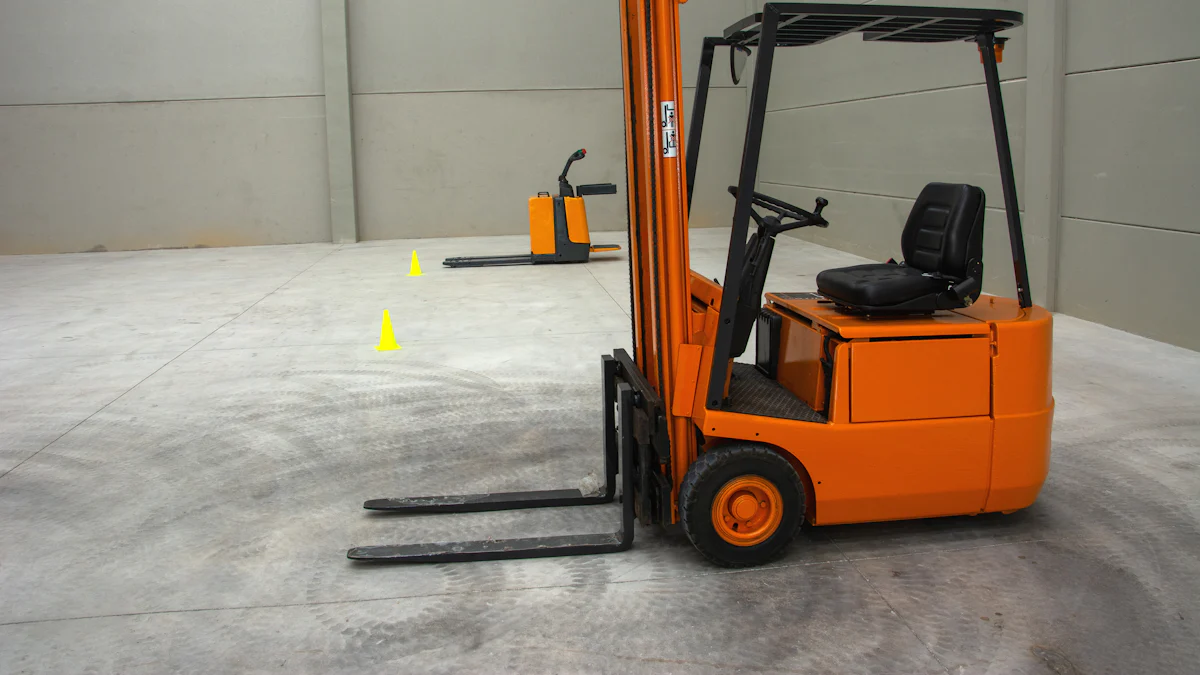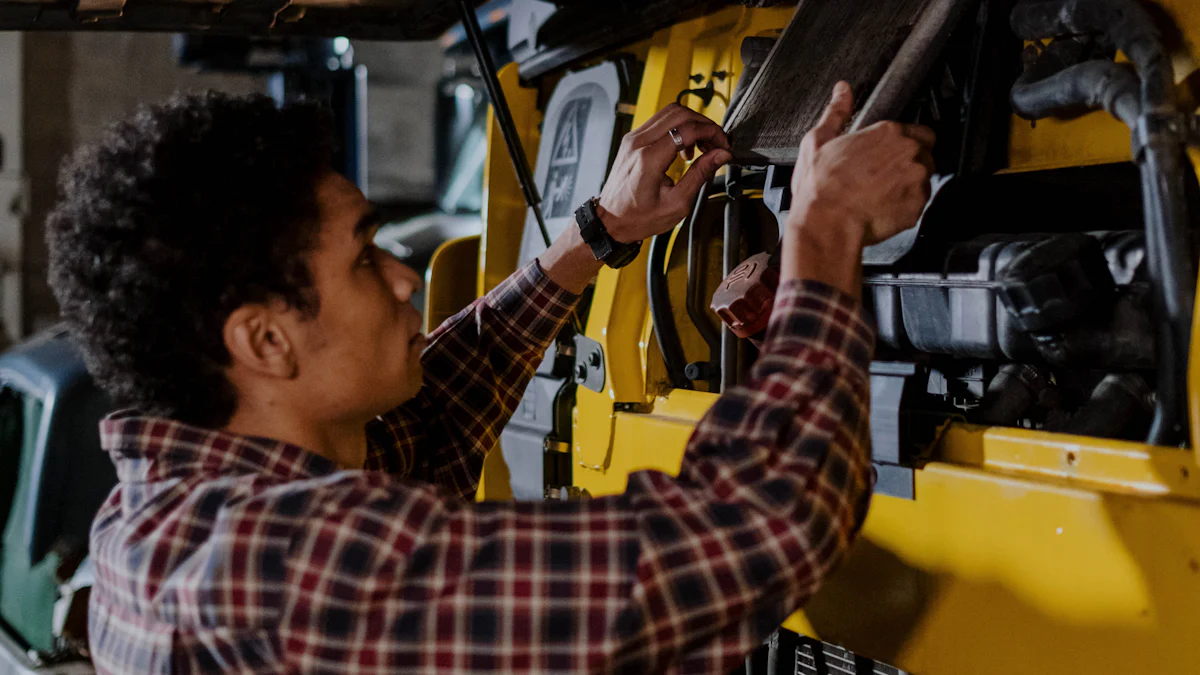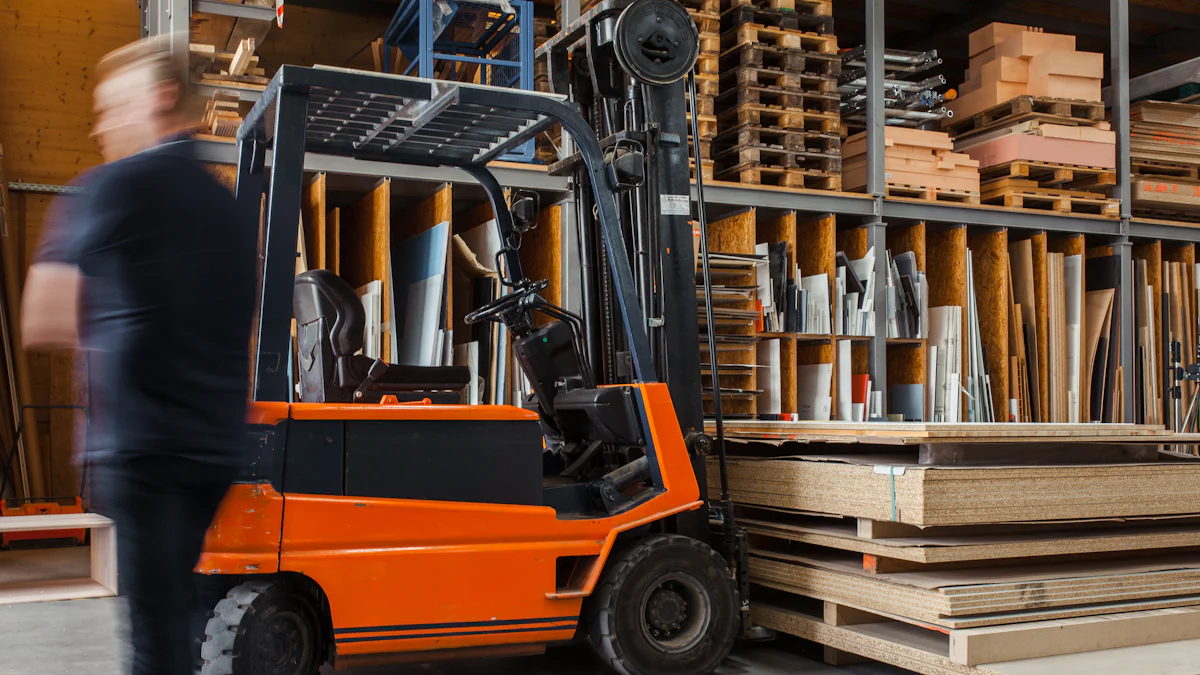
Regular pallet jack service is crucial for ensuring these powerful machines function optimally and safely. By conducting routine maintenance, equipment managers can prevent accidents, reduce costly damages, and extend the lifespan of their pallet jacks. Proper maintenance not only enhances performance but also saves money in the long run by minimizing repair needs. With a well-maintained truck lasting up to 10 years, following a maintenance plan is key to longevity and efficiency.
Regular Inspection
Regular inspection of pallet jack service is a fundamental aspect of ensuring the safety, efficiency, and peak performance of these essential machines. By conducting routine checks, equipment managers can identify potential issues early on, reducing downtime and minimizing repair costs. Let’s delve into the key areas of regular inspection to maintain the optimal functionality of pallet jacks.
Checking Nuts and Bolts
Importance of Tightening
Ensuring that all nuts and bolts are securely fastened is crucial for the safe operation of pallet jacks. Loose nuts and bolts can lead to instability during lifting and lowering operations, posing a significant safety risk to operators and nearby personnel.
Tools Needed
To tighten nuts and bolts effectively, you will require basic tools such as a wrench or socket set. These tools allow you to adjust the tightness of various components within the pallet jack, ensuring that everything remains in place during operation.
Steps to Follow
- Begin by visually inspecting all nuts and bolts on the pallet jack.
- Use the appropriate tool to tighten any loose fasteners found during the inspection.
- Check each connection point systematically to ensure uniform tightness across all components.
Inspecting for Hydraulic Leaks
Identifying Leaks
Hydraulic leaks can compromise the performance and safety of a pallet jack if left unaddressed. Common signs of hydraulic leaks include puddles of fluid beneath the jack or visible dampness around hydraulic components.
Repairing Leaks
- Locate the source of the leak by tracing back from where fluid is pooling.
- Once identified, assess whether it requires a simple seal replacement or professional intervention.
- Clean up any spilled hydraulic fluid promptly to prevent workplace hazards.
Testing Lifting and Lowering Mechanism
Ensuring Proper Functionality
Testing the lifting and lowering mechanism is essential to verify that it operates smoothly without any jerking motions or unusual sounds. A well-functioning lifting mechanism ensures efficient material handling operations.
Common Issues and Fixes
- If you notice jerky movements during lifting or lowering, check for obstructions in the mast channels.
- Unusual sounds may indicate worn-out components that require replacement for optimal performance.
- Regularly lubricate moving parts to reduce friction and enhance overall functionality.
Regular maintenance tasks for pallet jacks play a vital role in sustaining their longevity while maximizing operational efficiency. By incorporating these inspection practices into your maintenance routine, you can proactively address issues before they escalate, ultimately enhancing workplace safety and productivity.
Hydraulic System Maintenance

Importance of Hydraulic Fluid
Hydraulic fluid is the lifeblood of pallet jack operation, ensuring smooth functionality and optimal performance. Using the correct hydraulic oil is paramount to prevent damage and extend the equipment’s lifespan. Regularly checking the fluid levels and quality is essential for maintaining the hydraulic system.
Checking Fluid Levels
- Check the hydraulic fluid levels at regular intervals to ensure they are within the recommended range.
- Use a dipstick or sight glass, if available, to accurately measure the fluid level.
- Inspect for any signs of contamination or discoloration that may indicate the need for a fluid change.
Replacing Hydraulic Fluid
- When replacing hydraulic fluid, use only the manufacturer-recommended type to avoid compatibility issues.
- Drain the existing fluid completely before refilling with fresh hydraulic oil.
- Follow proper disposal procedures for old hydraulic fluid to adhere to environmental regulations.
Maintaining Hydraulic Seals
Hydraulic seals play a critical role in preventing leaks and maintaining pressure within the system. Regular inspection of these seals is necessary to identify wear and tear early on, preventing potential breakdowns and costly repairs.
Inspecting Seals
- Visually inspect all hydraulic seals for signs of damage, such as cracks or leaks.
- Pay close attention to areas where leaks are more likely to occur, such as around piston rods or cylinder walls.
- Replace any damaged seals promptly to prevent fluid leakage and ensure system integrity.
Replacing Worn Seals
- When replacing worn seals, select high-quality replacements that meet or exceed OEM specifications.
- Follow manufacturer guidelines for seal replacement procedures to ensure proper installation.
- Test the system after seal replacement to verify that there are no leaks or issues affecting performance.
Hydraulic system maintenance is a crucial aspect of pallet jack service, ensuring reliable operation and longevity of equipment. By prioritizing proper care of hydraulic fluids and seals, equipment managers can minimize downtime, reduce repair costs, and optimize overall performance.
Battery Maintenance
Checking Battery Health
Proper maintenance of pallet jack batteries is essential for ensuring longevity and optimal performance. By following manufacturer guidelines and implementing effective battery maintenance practices, equipment managers can maximize the lifespan of their electric pallet jacks. Let’s explore the key aspects of checking battery health to keep your equipment running smoothly.
Inspecting Battery Terminals
- Inspect the battery terminals regularly to ensure they are free from corrosion or build-up.
- Use a wire brush or terminal cleaning tool to remove any dirt or residue that may affect the connection.
- Check for any loose connections and tighten them securely to prevent electrical issues.
Cleaning Battery Terminals
- Clean the battery terminals using a mixture of baking soda and water to dissolve any acidic residue.
- Gently scrub the terminals with a wire brush to eliminate stubborn buildup effectively.
- Rinse the terminals with clean water and dry them thoroughly before reconnecting.
Charging the Battery
Maintaining proper charging practices is crucial for preserving the health and performance of electric pallet jack batteries. By following recommended charging techniques and avoiding overcharging, equipment managers can ensure reliable operation and extended battery life.
Proper Charging Techniques
- Charge the battery only when necessary, avoiding unnecessary top-ups that can reduce battery efficiency.
- Follow manufacturer guidelines on charging times and intervals to prevent overloading or undercharging.
- Use a compatible charger designed for your specific pallet jack battery type to optimize charging efficiency.
Avoiding Overcharging
- Monitor the charging progress regularly to prevent overcharging, which can damage the battery cells.
- Disconnect the charger promptly once the battery reaches full capacity to avoid excessive voltage levels.
- Implement a charging schedule based on usage patterns to maintain optimal charge levels without overburdening the battery.
Proper maintenance of pallet jack batteries is paramount for ensuring uninterrupted operation and maximizing equipment lifespan. By incorporating these battery maintenance practices into your routine, you can enhance performance, minimize downtime, and extend the longevity of your electric pallet jacks.
Wheel and Fork Maintenance

Inspecting Wheels for Wear
When examining the wheels of a pallet jack, it is crucial to pay attention to signs of wear and tear. The forks are exposed to heavy loads daily, making them susceptible to damage if not inspected regularly. Chipping, bending, or buckling can occur if the forks are not lowered correctly before sliding under a pallet. These issues can lead to accidents and property damage within your facility.
To identify worn wheels effectively, look for areas with chipping, buckling, or bending. Structural damages are a serious concern that should be reported immediately for timely repairs. While paint chips may be common, any significant structural damage must be addressed promptly to prevent further complications.
Identifying Worn Wheels
- Inspect the wheels daily for any visible signs of damage.
- Look out for chipping, buckling, or bending in the wheel structure.
- Report any structural damages promptly for necessary repairs.
Replacing Wheels
- If excessive debris is embedded in the wheel tread or parts of the tire material are missing, consider replacing the wheels.
- Ensure that replacement wheels meet the manufacturer’s specifications for compatibility and safety.
- Follow proper installation procedures to maintain optimal performance.
Keeping Forks Clean
Maintaining clean forks on your pallet jack is essential for ensuring smooth operations and preventing premature wear and tear. Timely cleaning and inspection of the forks can extend their lifespan while minimizing potential hazards in your workplace.
Regularly cleaning the forks helps prevent debris buildup that could affect their functionality over time. By keeping them free from dirt and grime, you ensure that they operate efficiently during material handling tasks.
Cleaning Techniques
- Use a mild detergent solution and a brush to clean the forks thoroughly.
- Pay special attention to areas where debris tends to accumulate, such as around load-bearing surfaces.
- Rinse off any soap residue and dry the forks completely before use.
Benefits of Clean Forks
- Clean forks reduce the risk of contaminants entering sensitive components of the pallet jack.
- Proper maintenance enhances operational efficiency by preventing unnecessary friction or resistance during lifting operations.
- Regular cleaning promotes a safer work environment by reducing slip hazards caused by debris accumulation.
Timely maintenance of both wheels and forks plays a vital role in maximizing the longevity and performance of your pallet jack equipment. By incorporating these practices into your routine maintenance schedule, you can ensure safe operations while optimizing efficiency in your warehouse setting.
- Regular maintenance ensures the longevity and reliability of pallet jacks, preventing unexpected breakdowns and costly repairs.
- Proper maintenance and timely repairs are crucial for keeping your hand pallet jack in top condition.
- Pallet Jacks are a valuable addition to any warehouse or retail store, requiring regular preventive maintenance to save time and money in the long run.
- Pallet jack repair service and proper maintenance of automated pallet trucks are paramount for boosting productivity, ensuring safety, and achieving cost savings.
- Investing in routine maintenance prolongs equipment lifespan while prioritizing staff safety.
- Using maintenance management software, such as a computerized maintenance management system (CMMS), is important for extending the life span of pallet jacks/trucks.
- Consistently looking for signs of wear and tear from wheels to batteries, forks, bearings, and hydraulic systems is key to preventing future problems.
- Follow an organized maintenance schedule for both manual and electric pallet trucks to keep machines in top condition.
Post time: Jun-12-2024
